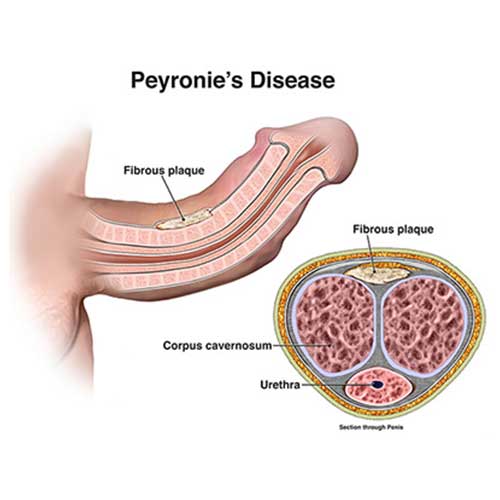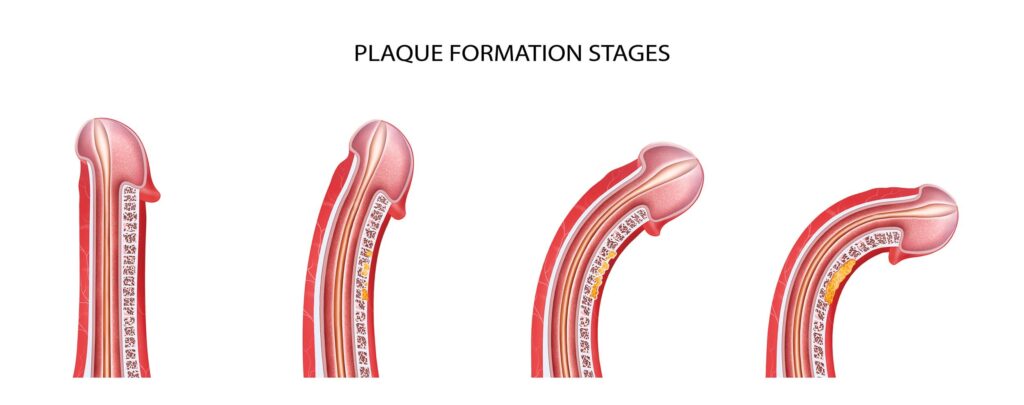Peyronie’s disease is a condition in which scar tissue (fibrosis) forms inside the penis, causing it to curve or bend during an erection. It is not clear what causes Peyronie’s disease, but it is thought to be related to injury or trauma to the penis. Peyronie’s disease is more common in men over the age of 40, but it can occur at any age.

The severity of Peyronie’s disease can vary, and it may not always be noticeable. Some men with Peyronie’s disease may have a noticeable curve in their penis, while others may have no visible curvature. In some cases, Peyronie’s disease can cause pain or discomfort during sex or difficulty achieving or maintaining an erection.

Peyronie’s disease is not common, and the exact prevalence is not known. However, it is estimated that it affects about 1-3% of men.
Treatment of Peyronie’s disease
There are several treatment options for Peyronie’s disease, including:
- Oral medications: Some medications, such as vitamin E or pentoxifylline, may be used to reduce scar tissue and improve blood flow to the penis.
- Injections: Injections of medications, such as verapamil or interferon, may be used to reduce scar tissue and improve blood flow to the penis.
- Surgery: In severe cases, surgery may be necessary to correct the curvature of the penis. This may involve removing scar tissue or using artificial materials to support the penis.
The effectiveness of treatment for Peyronie’s disease can vary, and in some cases, the condition may resolve on its own. It is important to speak with a healthcare provider for a proper evaluation and treatment of Peyronie’s disease. They can help determine the best course of treatment based on the severity of the condition and your individual needs and goals.